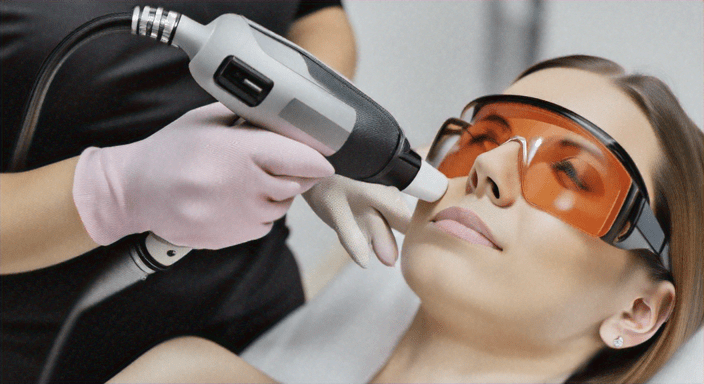Effective for many, laser hair removal results can differ depending on skin tone and hair color. Gaining insight into how laser hair removal interacts with various skin tones and hair types will assist you in determining if it is the appropriate option for you.

Mechanism of Laser Hair Removal
The process of laser hair removal is centered on targeting the melanin (pigment) within hair follicles. The laser’s light is absorbed by the dark pigment, thereby heating and damaging the follicle to inhibit hair growth. This method is most successful on darker hair but may present challenges for specific skin tones and hair colors.
Optimal Candidates for Laser Hair Removal
Historically, the ideal candidates were individuals with light skin and dark hair. The laser effectively differentiates the dark pigment in the hair from the light skin, thereby facilitating the targeting of the follicle without impacting the surrounding skin.
-
Contrast: The distinct difference between light skin and dark hair simplifies the laser’s task of targeting the hair.
-
Melanin-rich hair: Dark hair contains a higher concentration of melanin, enabling the laser to efficiently absorb and destroy the follicle.
Laser Hair Removal for Individuals with Dark Skin Tones
Previously, individuals with darker skin tones (classified as types IV to VI on the Fitzpatrick scale) were at a higher risk of experiencing side effects such as hyperpigmentation or burns. However, advancements in laser technology, including the Nd:YAG laser, have rendered the treatment considerably safer and more effective for dark skin.
-
Longer wavelength: This penetrates deeper into the skin, circumventing surface pigment and directly targeting hair follicles.
-
Reduced pigmentation risks: Deeper penetration minimizes the likelihood of skin burns or discoloration.
Laser Hair Removal for Light Hair
Individuals with blonde, red, gray, or white hair may encounter less consistent results, as these colors contain minimal to no melanin. Newer technologies, such as Diode lasers, strive to enhance results for lighter hair colors, although challenges persist.
-
Inconsistent results: Achieving noticeable hair reduction may necessitate more sessions.
-
Consultation: A professional may propose alternative treatments or combinations with other methods to improve outcomes.
Selecting the Appropriate Laser
Each skin tone and hair type necessitates specific laser technologies to guarantee safe and effective treatment. Below is a table summarizing common laser types and their optimal applications:
| Laser Type | Best For | Skin Tone Compatibility (Fitzpatrick Scale) |
|---|---|---|
| Alexandrite Laser | Light to olive skin, dark hair | Types I-IV (lighter skin) |
| Diode Laser | Darker skin tones, light to dark hair | Types I-V |
| Nd:YAG Laser | Dark skin tones, dark hair | Types IV-VI (darkest skin) |
| Ruby Laser | Light skin, fine hair | Types I-III |
Pre-Treatment, Post-Treatment, and Suitability Considerations
To achieve the best results, proper preparation, aftercare, and selecting the right laser are crucial.
For Dark Skin:
-
Avoid sun exposure: Tanning elevates the risk of burns and discoloration.
-
Use sunscreen: Protect treated areas post-procedure to prevent pigmentation issues.
For Light Hair:
-
More sessions: Lighter hair often necessitates additional treatments for optimal results.
-
Consult a technician: Combining methods may enhance effectiveness.
Suitability
The success of the treatment hinges on matching the appropriate laser to your skin and hair type. Darker skin benefits from Nd:YAG lasers, whereas lighter hair may require more sessions or alternative methods. Consult a professional to determine the best approach for you.
FAQ Section
Q1: Is laser hair removal effective on gray or white hair?
Laser hair removal is generally less effective on gray or white hair due to the absence of melanin. Alternative treatments, such as electrolysis, are often recommended for these hair colors.
Q2: What is the Fitzpatrick scale?
The Fitzpatrick scale is a classification system used to categorize skin types based on their response to UV exposure, ranging from Type I (very light skin) to Type VI (very dark skin).
Conclusion
Thanks to advancements in laser technology, laser hair removal is now an option for a broader range of skin tones and hair types. Although it remains most effective for individuals with light skin and dark hair, newer lasers like the Nd:YAG have made it safer for darker skin tones. A proper consultation and the right laser selection are essential for achieving optimal results.





